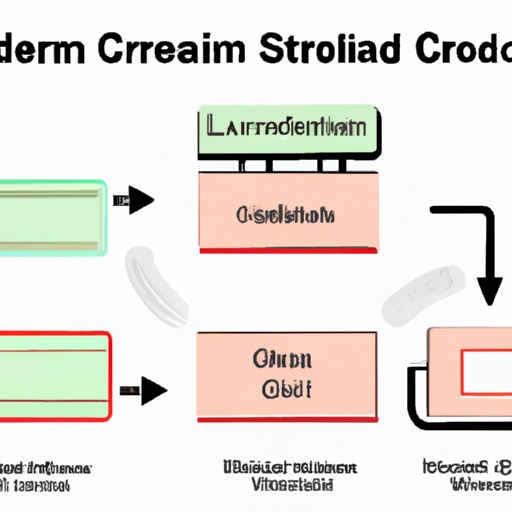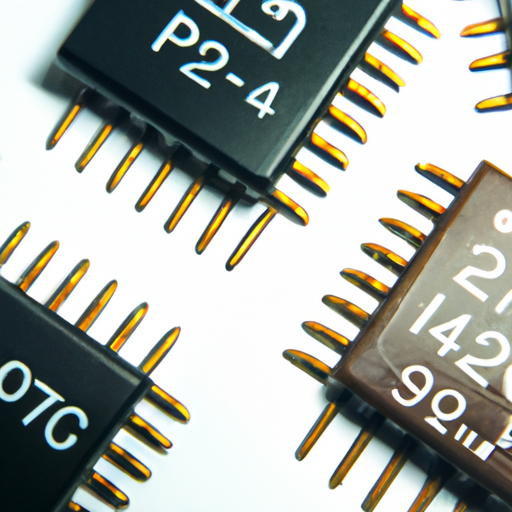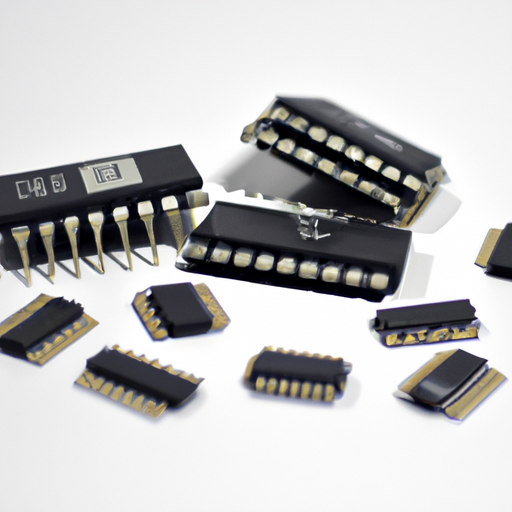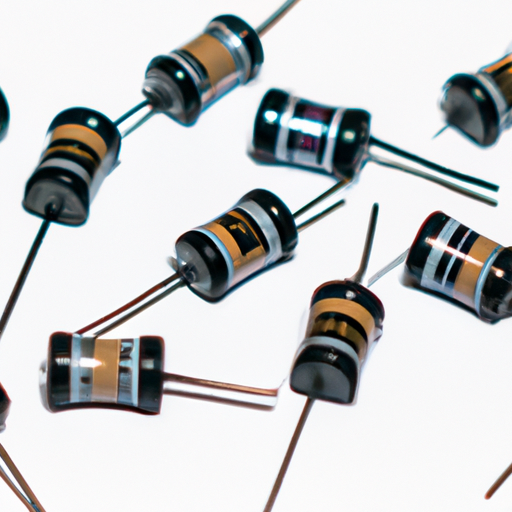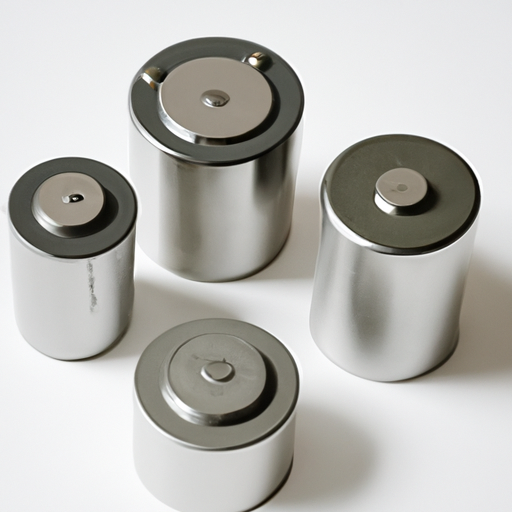What are the mainstream integrated circuit production processes?
Mainstream Integrated Circuit Production Processes
I. Introduction
Integrated Circuits (ICs) are the backbone of modern electronics, enabling the functionality of everything from smartphones to supercomputers. These tiny chips, often no larger than a fingernail, contain millions or even billions of transistors that work together to perform complex calculations and tasks. The importance of ICs in contemporary technology cannot be overstated; they are essential for the operation of virtually all electronic devices. This blog post will explore the mainstream production processes of integrated circuits, providing insights into the intricate steps involved in bringing these vital components to life.
II. Overview of Integrated Circuit Production
The production of integrated circuits is a sophisticated process that involves multiple stages, each critical to the final product's performance and reliability. Semiconductor manufacturing plays a pivotal role in this industry, with key players ranging from design firms to fabrication plants and assembly houses. As technology advances, the IC production landscape is evolving, with trends such as miniaturization, increased automation, and the integration of artificial intelligence (AI) shaping the future of semiconductor manufacturing.
III. Design Phase
The journey of an integrated circuit begins with the design phase, where engineers conceptualize and specify the chip's functionality. This phase is crucial, as it lays the groundwork for all subsequent steps. Electronic Design Automation (EDA) tools are employed to create detailed schematics and layouts, allowing designers to visualize the circuit's architecture.
Once the design is complete, it undergoes rigorous verification and validation processes to ensure it meets the specified requirements. Design for Manufacturability (DFM) principles are also applied during this phase, ensuring that the design can be efficiently and effectively manufactured. This proactive approach helps to minimize potential issues during fabrication, ultimately leading to a more reliable final product.
IV. Wafer Fabrication
Wafer fabrication is the heart of integrated circuit production, where the actual physical chip is created. This process begins with wafer preparation, where a pure silicon wafer is cleaned and polished to create a smooth surface for subsequent steps.
Key Steps in Wafer Fabrication
1. **Photolithography**: This critical step involves transferring the circuit design onto the silicon wafer. A photosensitive material, known as photoresist, is applied to the wafer's surface. A mask, which contains the circuit pattern, is then used to expose specific areas of the photoresist to ultraviolet light. After exposure, the wafer is developed, revealing the pattern that will guide the subsequent etching process.
2. **Etching**: Once the pattern is established, etching removes unwanted material from the wafer. There are two primary types of etching: wet etching, which uses chemical solutions to dissolve material, and dry etching, which employs plasma to etch away layers with high precision.
3. **Ion Implantation**: This step involves bombarding the wafer with ions to alter its electrical properties. By introducing specific dopants, manufacturers can create regions of n-type or p-type semiconductors, essential for forming transistors.
4. **Deposition Processes**: Various deposition techniques are used to add layers of materials to the wafer. Chemical Vapor Deposition (CVD) and Physical Vapor Deposition (PVD) are two common methods. CVD involves chemical reactions that deposit thin films on the wafer, while PVD uses physical processes to vaporize materials and condense them onto the surface.
5. **Chemical Mechanical Planarization (CMP)**: This process ensures that the wafer surface is flat and uniform, which is critical for the subsequent layers. CMP combines chemical and mechanical processes to polish the wafer, removing any topographical variations.
Quality Control During Fabrication
Quality control is paramount throughout the wafer fabrication process. Advanced inspection techniques, such as scanning electron microscopy (SEM) and atomic force microscopy (AFM), are employed to detect defects and ensure that the wafers meet stringent specifications.
V. Assembly and Packaging
Once the wafers are fabricated, they undergo assembly and packaging, which are crucial for protecting the IC and ensuring its performance. The packaging process not only safeguards the chip from environmental factors but also facilitates its integration into electronic devices.
Types of Packaging
1. **Dual In-line Package (DIP)**: This traditional packaging style features two parallel rows of pins, making it easy to insert into a circuit board.
2. **Surface Mount Device (SMD)**: SMDs are designed for surface mounting, allowing for higher density and smaller footprints on circuit boards.
3. **Ball Grid Array (BGA)**: BGAs use an array of solder balls on the underside of the package, providing excellent electrical performance and thermal management.
Assembly Processes
The assembly process involves several key steps:
1. **Die Bonding**: The individual chips, or dies, are attached to the package substrate using adhesives or solder.
2. **Wire Bonding**: Fine wires are used to connect the die to the package leads, establishing electrical connections.
3. **Encapsulation**: The assembled chip is encapsulated in a protective material to shield it from moisture, dust, and mechanical stress.
Testing and Quality Assurance
Before distribution, ICs undergo rigorous testing to ensure their functionality and reliability. This includes wafer testing, package testing, and functional testing, where the chips are evaluated under various conditions to identify any potential failures.
VI. Testing and Validation
Testing is a critical component of the IC production process, ensuring that each chip meets the required specifications and performance standards. Various testing methods are employed throughout the production cycle.
Types of Testing
1. **Wafer Testing**: Conducted before the wafers are diced into individual chips, this testing assesses the electrical performance of each die.
2. **Package Testing**: After packaging, ICs undergo tests to verify their functionality and performance in real-world conditions.
3. **Functional Testing**: This comprehensive testing evaluates the chip's performance in various operational scenarios, ensuring it meets the intended specifications.
Reliability Testing and Failure Analysis
Reliability testing is essential for assessing the long-term performance of ICs. This includes stress testing under extreme conditions, such as high temperatures and humidity. Failure analysis is conducted to identify the root causes of any defects, allowing manufacturers to implement corrective measures in future production runs.
VII. Final Steps and Distribution
After passing all tests, ICs undergo final inspection and quality assurance checks before being packaged for distribution. This final step ensures that only the highest quality products reach the market.
Distribution Channels for ICs
ICs are distributed through various channels, including direct sales to manufacturers, distributors, and online platforms. The demand for ICs is influenced by market trends, technological advancements, and the overall health of the electronics industry.
Market Trends and Demand Forecasting
As technology continues to evolve, the demand for integrated circuits is expected to grow. Emerging applications, such as the Internet of Things (IoT), artificial intelligence, and 5G technology, are driving the need for more advanced and efficient ICs.
VIII. Challenges in Integrated Circuit Production
Despite the advancements in IC production, several challenges persist in the industry.
Technological Challenges
The rapid pace of technological change requires manufacturers to continuously innovate and adapt their processes. This includes developing new materials, improving fabrication techniques, and addressing the challenges of miniaturization.
Economic Factors
Economic fluctuations can impact the semiconductor industry, affecting production costs, pricing, and demand. Manufacturers must navigate these challenges to remain competitive.
Environmental Considerations
The production of integrated circuits has environmental implications, including waste generation and energy consumption. Manufacturers are increasingly focusing on sustainable practices to minimize their environmental footprint.
Supply Chain Issues
The global semiconductor supply chain is complex and can be vulnerable to disruptions. Factors such as geopolitical tensions, natural disasters, and pandemics can impact the availability of raw materials and components.
IX. Future Trends in IC Production
The future of integrated circuit production is poised for significant advancements.
Advances in Fabrication Technology
Emerging fabrication technologies, such as extreme ultraviolet (EUV) lithography, are enabling the production of smaller and more powerful chips. These innovations will continue to push the boundaries of what is possible in semiconductor manufacturing.
Emerging Materials and Processes
Research into new materials, such as graphene and silicon carbide, is opening up new possibilities for IC design and performance. These materials may offer improved electrical properties and thermal management.
The Impact of AI and Machine Learning
AI and machine learning are increasingly being integrated into the IC production process, enhancing design, testing, and quality control. These technologies can help identify defects more efficiently and optimize manufacturing processes.
Sustainability in IC Manufacturing
As environmental concerns grow, the semiconductor industry is focusing on sustainability. This includes reducing energy consumption, minimizing waste, and developing eco-friendly materials and processes.
X. Conclusion
The production processes of integrated circuits are complex and multifaceted, involving a series of intricate steps from design to distribution. As technology continues to evolve, the importance of ICs in modern electronics will only increase. By understanding the mainstream production processes, we can appreciate the sophistication and innovation that goes into creating these essential components. The future of integrated circuits is bright, with advancements in technology and a focus on sustainability paving the way for continued growth and innovation in the industry.

